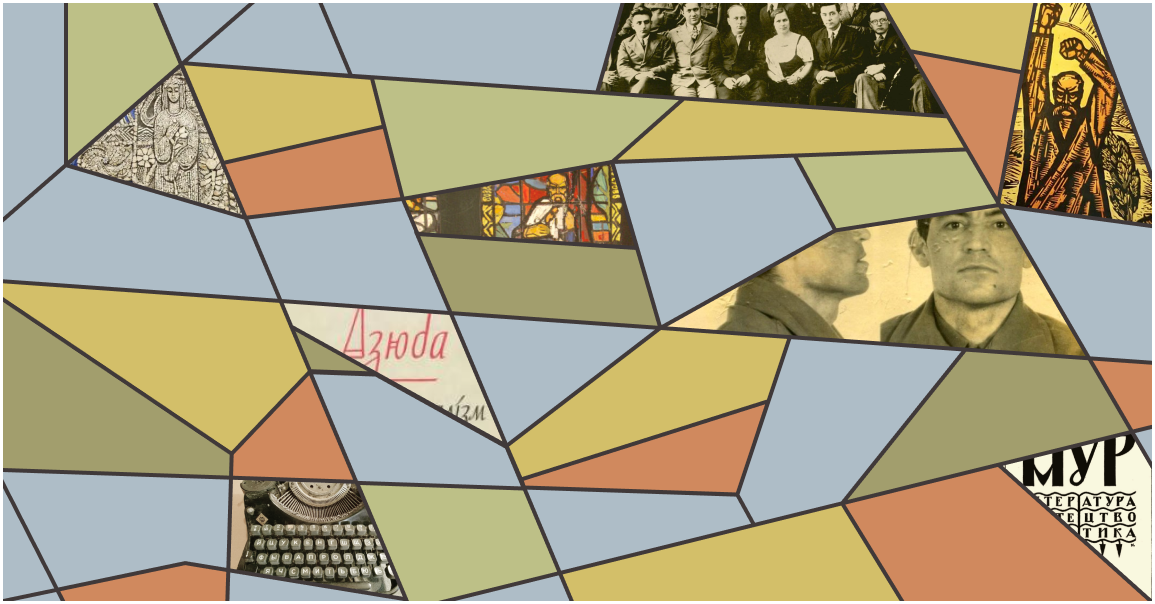
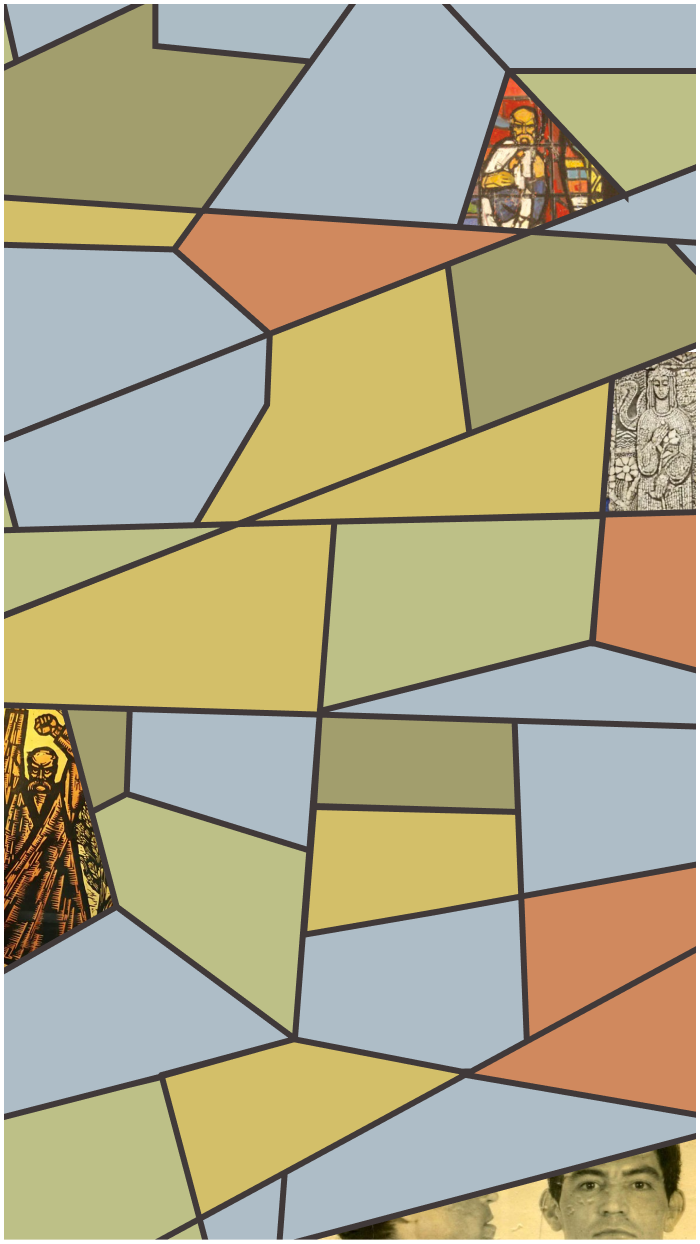
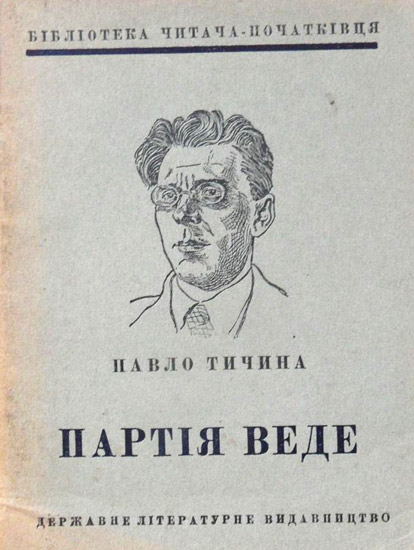
Since the 17th century, Russians have been claiming that Ukrainian literature is “primitive”, “rustic”, “poor”, “secondary”, etc. The tradition of Baroque literature, old Ukrainian literature, written in the XII-XVII centuries, were either stolen and appropriated by Russians or shadowed.
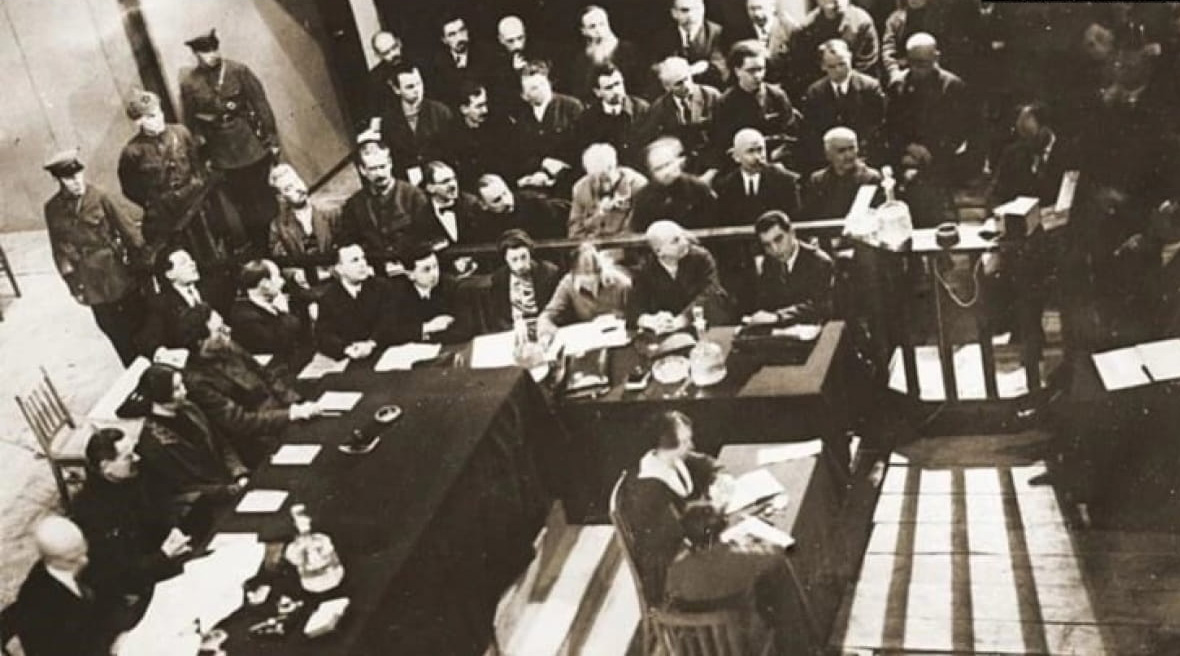
Ukrainian poets spent plenty of time in Russian prisons. Starting from the one classic – Taras Shevchenko, imprisoned in the 19th century, to another – Vasyl Stus, who died in prison in 1985. How Russia tortures writers nowadays, you can read in memories of Oleg Sentsov (kidnapped in 2014, released in 2019) and Stanislav Aseyev (kidnapped in 2017, released in 2019).
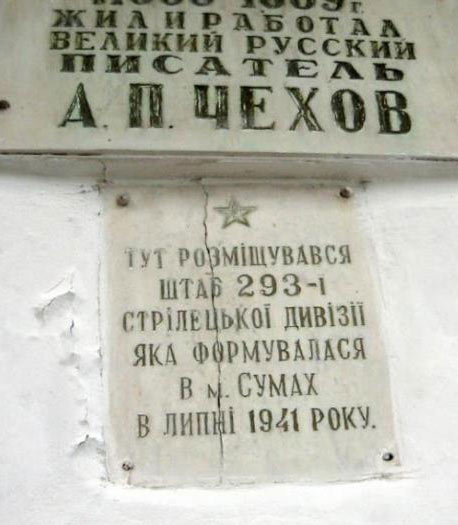
In Soviet Ukraine, the number of museums dedicated to Russian writers was incredibly high.
In the temporarily occupied Ukrainian cities, museums dedicated to figures of Ukrainian culture are being closed. The occupiers are building propaganda institutions: the Museum of Crimea and Novorossia in Sevastopol, the Victory Museum in Mariupol, and the History Park in Melitopol, which glorify Russian war criminals.
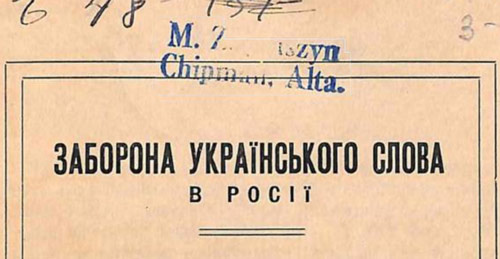
Russian censorship of Ukrainian books started in 1690. Since then, Ukrainian books were under high control till the independence of Ukraine in 1991.
Since 2022, Russians have destroyed some of the biggest Ukrainian printing facilities. Russians as well launched a missile attack on the Factor-Druk, one of the largest printing complexes in Europe. Seven people were killed, and 21 were injured.
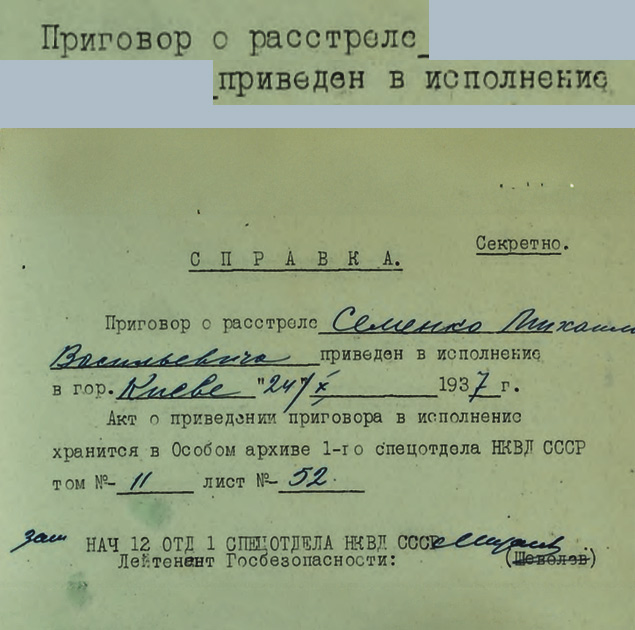
On 18 December 1934, the wives of the writers Hryhorii Kosynka and Oleksa Vlyzka came to the NKVD prison in Kyiv in the morning as usual. They had been bringing parcels here for over a month and hoped to see each other. This morning, the relatives of the other detainees greeted them, shook hands and left. No one dared to show the two women the newspaper. In the afternoon, a man was sent to tell them that there was no one else to go and wait… This was the first death sentence and the first execution of writers, a whole group of them. Previous falsified trials of the creative intelligentsia ended in punishment in labour camps or exile.
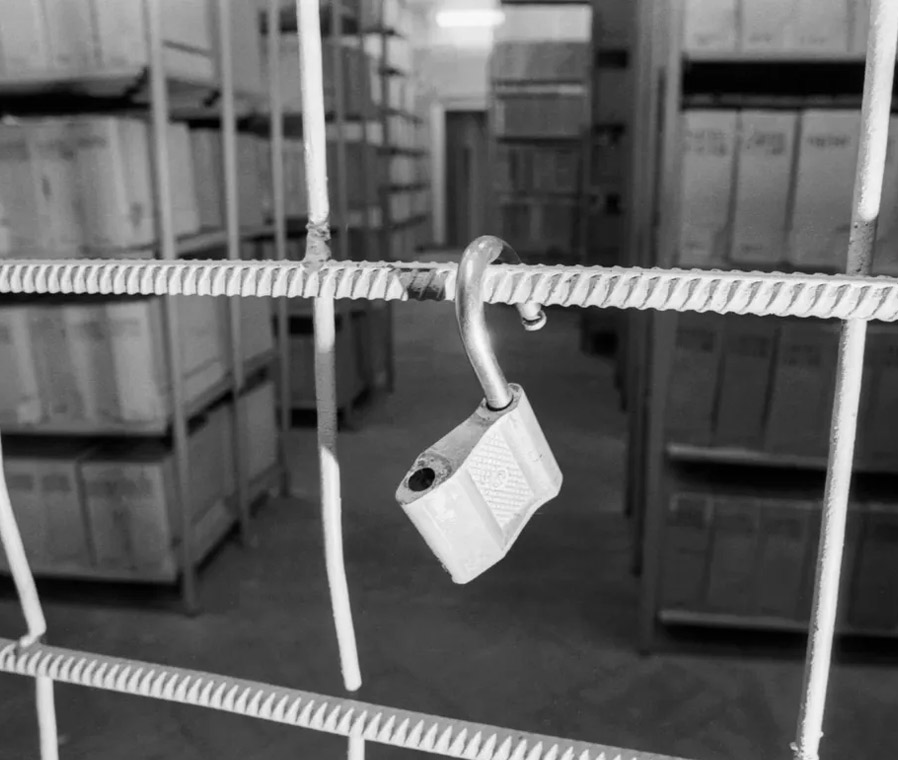
From the earliest days of the USSR, nearly all public libraries were placed under the control of state agencies responsible for the political indoctrination of citizens, what was known as “political education.”
All of them were guided by instructions originating from Moscow, the political and ideological centre.
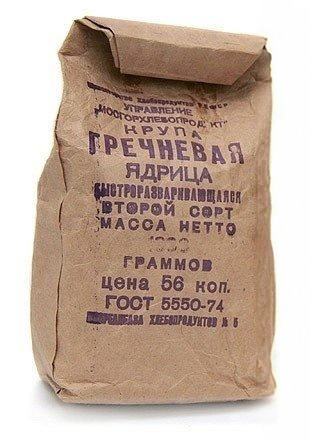
A writer in the Soviet Union could live a good life. The authorities took care of them, tempted with huge circulations, royalties and other benefits. Artists, not crushed by the millstones of repression, now found themselves at a crossroads. They could accept all the benefits in exchange for their “loyalty” or withdraw, literally “holding tightly,” as Ukrainian poet Vasyl Stus said about his favorite (Ukrainian) poet Volodymyr Svidzinsky.

Punitive medicine is a phenomenon of the 1960s-80s, it was a form of fighting against dissidents and political opponents by sending them to a psychiatric institution and subjecting to strong treatments which damaged physical and mental health. To avoid publicity, anyone could be labeled a schizophrenic and locked up in a psychiatric institution. This made it possible not only to get rid of the person, but also to discredit their activities and undermine the adequacy of their judgment.

Many Soviet authors were forced to work within writers’ unions and societies to produce propaganda narratives. These works could be dedicated to the next anniversary of the Party, huge construction projects, military victories, expository criticism of “enemies of the people,” and so on. Poet Mykola Bazhan wrote poems about the accession of Western Ukraine to the Ukrainian SSR. Pavlo Tychyna wrote many texts about the leadership of the CPSU and Ukrainian-Russian friendship. Soviet literature initiatives produced hundreds of such texts annually, geared toward specific age groups. There was always a demand for industrial novels about factories and poems about October-born children and milkmaids.

Writers and representatives of the creative intelligentsia who conflicted with the authorities often lost their jobs or were expelled from educational institutions for being “unreliable” employees and students. This became a common method for the system to abridge dissidents from social benefits, marginalizing their social functioning. A careless public statement or a poem without an ideological “backing” was sometimes enough to lose all future prospects within the Soviet state. Ukrainian poet and activist Vasyl Stus, for instance, was expelled from graduate school and forced to work as a construction worker and a stoker. Vasyl Holoborodko, Mykola Vorobiov, Vasyl Symonenko, Ivan Drach, and many other Ukrainian authors were also expelled from universities. Taras Melnychuk, after his exile in camps, was placed under the supervision of the punitive authorities, and then, with the assistance of the KGB, was relegated to a psychiatric hospital.
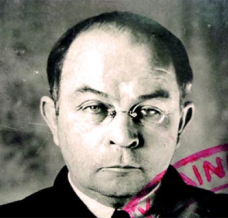
A sexot is an informant recruited by the intelligence services who reports to the KGB about conversations in his environment, recounts the opinions expressed, and reports on the characteristics of people they know. In general, this includes any information relevant to the punitive authorities for controlling unreliable groups. Unfortunately, sexots were often well-known writers, cultural figures, or dissident movements who were deeply integrated into the relevant circles. For example, it is known that Viktor Petrov, Yuriy Smolych, and Maria Sosiura (poet Volodymyr Sosiura’s wife) extensively collaborated with the intelligence services. That said, in many archival documents, sexots are listed under fake nicknames, making it difficult for researchers to properly identify them.
Like the fear of having your home or phone wiretapped, the threat of having snoops among close friends increased the need to be vigilant. The need for self-censorship multiplied the perception of a system of total control that had penetrated every aspect of private life.

Wiretapping the homes and phones of creative intelligentsia and dissidents was an integral part of the totalitarian KGB’s control in the Soviet Union. This allowed the authorities to collect large amounts of compromising information on “ideologically unstable” writers, artists, human rights activists, and public figures, which was then used during interrogations, trials, and criminal cases. Wiretaps could be installed in apartment walls, ventilation shafts, household items, etc. Since writers in the Ukrainian SSR often lived in compact residences, such as the Slovo or Rolit writers houses in Kharkiv, this made the task easier for intelligence services.
The constant fear of being overheard made it dangerous to speak out and led to self-censorship even within the walls of their own homes. This forced many artists to meet for conversations in public places — in parks or on the street — where risks were lower, although surveillance was still possible
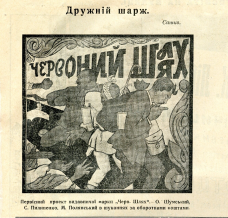
Socialist realism (a term invented by literary critic Ivan Gronsky) was the official style of art in the USSR. Introduced in the 1930s, it became the main style of creativity, designed to glorify Soviet reality, party policy, and labor, while reinforcing the belief in a near and bright communist future.
Authors who did not share socialist realist views on writing didn’t have many chances to gain success. Novels by Viktor Petrov, which could hardly be called socialist realism, were kept in a drawer for a long time, and Petrov was silent for many years, unable to write the way he wanted to. The same applies to the texts of Vasyl Holoborodko, Mykola Vorobiov, and the authors of the Replaced Generation, who were not allowed to publish freely in the Ukrainian SSR.
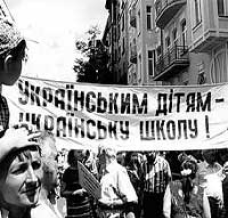
Russification was a deliberate policy of the Russian Empire, and later the USSR, aimed at supplanting national cultures in favor of Russian culture and language. The Russian language became compulsory in schools, which led to the marginalization of national languages in the Soviet republics.
Due to the consistent implementation of Russification policy by the Soviet government, Russian became the dominant language in a number of regions in eastern and southern Ukraine. The same was true in large cities, where Ukrainian was actively pushed out to become perceived as the “language of villagers.”

The USSR writers’ society and its republican branches were established in 1934 after the abolition of all creative unions in the Soviet state. The organization was needed to centralize and control the work of authors, especially those who had previously allowed themselves to write texts that went far beyond the ideology of the Party.
The writers’ society became the center of the literary process in the USSR. It provided material support for writers, various benefits, and the opportunity to be published in state-owned publishing houses, all in exchange for ideological loyalty. Authors who disagreed with the party’s politics were weeded out and thrown out of the society’s infrastructure, rendering them unable to legally continue their creative work.
Ukraine’s modern day National Writers’ Society of Ukraine has largely inherited the apparatus of the Writers’ Society Union of the Ukrainian SSR.
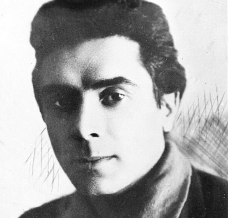
A common strategy existed for writers and intellectuals to maintain their relatively normal existence within the regime in Ukrainian SSR: public repentance. Authors accused of anti-Soviet activities were forced to make public statements in which they admitted their mistakes and even validated the fictitious or false accusations made against them.
Such “repentances” could take the form of articles, publications, and public speeches. Mykola Khvylovyi and Mykhailo Yalovyi, who “played a bit too much” in the literary discussion, had to justify themselves on the pages of the Vaplite magazine (full name: Vilna akademiia proletarskoi literatury, Free Academy of Proletarian Literature). Mykhailo Semenko was forced to publish self-deprecating articles about futurism in later issues of the “Nova heneratsia” (New Generation) magazine.
Authors who did not go through with the proposed public repentance found themselves either in exile or unable to continue writing. Their works were not accepted for publication, and they were denied employment related to culture, the press, or education.
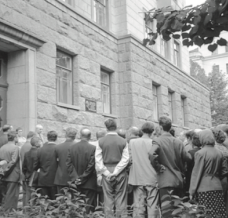
People daring to criticize the regime or deviate from officially established ideological norms were subjected to devastating accusations of “anti-Soviet” sentiment and criticism in the press. For instance, disgraced writers were criticized at writers’ association meetings. The most ardent oppositionists could be labeled “enemies of the people,” leaving an imprint on their destiny and the fate of their families.
Public condemnation often became the first step to repressions, bans on printing, exile, and death sentences, especially during the Stalinist repression of the 1930s. Some of the embattled authors saved themselves by performing public repentance, which consequently undermined their credibility among like-minded people. In 1947, poet Mykola Bazhan was forced to join the literary and political persecution of author Yurii Yanovsky, who was not only a writer but also Bazhan’s close friend. Bazhan’s mother refused to forgive her son for this.

Samvydav (self-publishing) was one of the main ways to distribute unauthorized texts in the USSR. Handwritten or typewritten books, newspapers, and brochures were passed from hand to hand and copied again and again to bypass the censorship restrictions of state publishing houses. That was the only way for readers to access various forbidden works, including those against the current state system.
In the Soviet Union, samvydav became extensive and widespread by the late 1950s. People who distributed and produced books by this method were subject to Article 54 of the Criminal Code of the Ukrainian SSR on “counterrevolutionary activity.” In 1961, the next version of the code, Article 62, became enacted. Article 62 dealt with anti-Soviet agitation and propaganda, under which activists of samvydav could receive up to seven years in prison. For instance, Mykhailo Osadchy, Yaroslav Hevrych, Mykhailo Horyn, Myroslava Zvarychevska, Yaroslava Menkush, and other representatives of the Ukrainian intelligentsia were convicted of anti-Soviet propaganda.
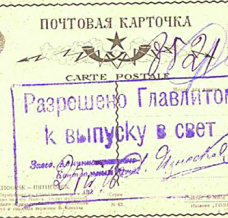
From the start, censorship was a leading component of Soviet policy in the field of information dissemination and publishing regulation. Its infrastructure was designed and implemented to ensure that readers received only the “right” texts. Censoring a book sometimes took up to a year. It had to go through every stage and undergo all corrections.
There were authors who attempted to deceive the censors. Poets of the Ukrainian SSR, for instance, often resorted to so-called “locomotives.” Ideologically charged poems were placed at the beginning of a poetry collection that “pulled” the rest of the poems through to publication. One can find such texts in “Amerykansky zoshyt” (American Notebook) by Ivan Drach, “Palmova vit” (Palm Branch) by Dmytro Pavlychko, “Tysha i hrim” (Silence and Thunder) by Vasyl Symonenko, and others.
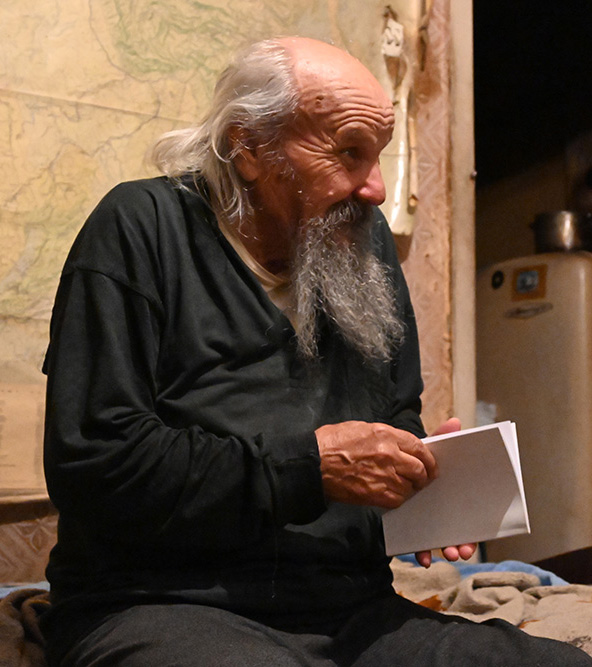
The USSR’s power to refuse publication was used as a form of control over literature, periodicals, and the media.
Authors who did not pass the editorial standards of censorship were not allowed to publish and had to look for different ways to spread their texts. Some were forced to self-publish; others sought ways to send their manuscripts abroad to uncensored publishing houses. There were also those who remained silent, writing their works “in a drawer.” This group included Valeriy Shevchuk, Vasyl Holoborodko, Ivan Semenenko, Mykhailo Hryhoriv, and others.
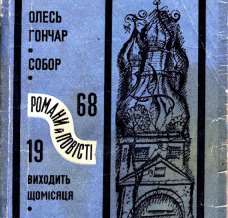
It was difficult to avoid censorship in the Ukrainian SSR. Once the authorities began to seriously enforce these policies, printed books, newspapers, and magazines were seized and destroyed. This occurred with “The Cathedral” by Oles Honchar, which was first published in the “Vitchyzna” (Motherland) magazine. It received favorable reviews and was widely circulated, but was just as suddenly removed from bookstores throughout the USSR. “Truth Calls!” a poetry collection by Dmytro Pavlychko, was also withdrawn from sale because of a denunciation to the Central Committee of the Communist Party of Ukraine. Work by Pavlychko and other poets was deemed to have “revived nationalist ideas.”
Books were forbidden to be sold and removed from libraries not only for being associated with undesirable or harmful content by repressive authorities. In some cases, it was enough for an “ideologically correct” author to spoil relations with the authorities and fall into disgrace. Their work, which had been present throughout the extensive network of Soviet bookstores and libraries, would completely disappear from shelves and catalogs.
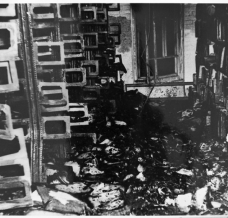
Many people associate the practice of burning books with Adolf Hitler’s Nazi regime, but this method of destroying “ideologically wrong” literature has been used in various countries at different times. The USSR is no exception. As early as the 1920s, the Union of Militant Atheists, with the support of the Party, implemented a policy of burning religious books. This practice was often behind the scenes, and the destruction of key texts was disguised as accidents. Sixtiers writer and historian Valeriy Shevchuk, in a conversation with Chytomo, recalls the year 1964. During the Taras Shevchenko holidays in May, the largest Ukrainian library collection of old prints and manuscripts in the Kyiv Public Library disappeared in a fire. The collection housed ancient and rare books, manuscripts, and archives of famous Ukrainian cultural figures. Its destruction caused irreparable damage to Ukrainian history and literature.
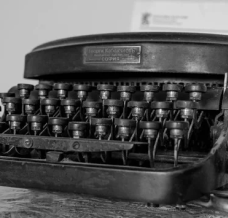
Typewriters were relied on to create unauthorized self-published books, brochures, leaflets, and magazines. As a result, Soviet authorities began imposing strict controls on typewriter distribution. Every typewriter had its own registration number, which allowed the KGB and other repressive organizations to determine the source of unauthorized documents. Each typewriter’s unique imprint made it possible to find out who wrote the paper and where it could be printed. In “Diaries: Uncensored,” Les Taniuk mentioned that there were typewriters for checks on which nothing “like that” could be typed, and two more – carefully hidden. Ukrainian writer and translator Halyna Kyrpa had to destroy her typewriter after a reprint of “Internationalism or Russification” by Ukrainian literary critic, social activist, and dissident Ivan Dziuba was typed on it. (In her interview with Chytomo, she said that she smashed the machine with hammers and threw it into a lake.)

